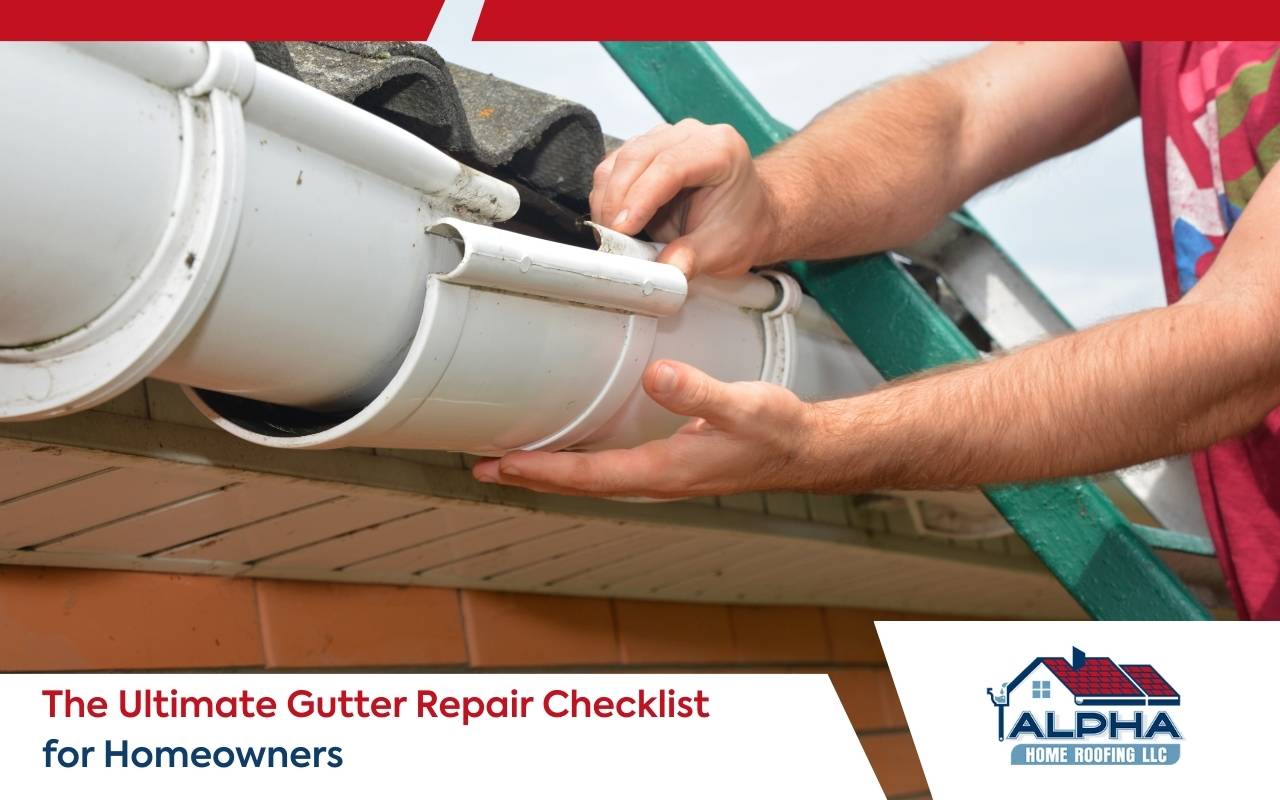
Leaky gutters might seem minor, but they can cause expensive water and foundation problems. Moreover, many homeowners ignore gutter systems until damage appears. The good news is you don’t need to wait. With the right tools and knowledge, you can protect your home. This ultimate gutter repair checklist ensures your drainage system stays strong. By spotting issues early, you can prevent major headaches. In addition, from wear signs to proper repair materials, this guide transforms problems into simple tasks. Consequently, you gain peace of mind with a well-maintained gutter system.
Importance of Regular Gutter Maintenance
Gutters direct rainwater away from roofs, walls, and foundations. Therefore, this prevents erosion and costly water damage. Over time, debris blocks water flow and causes overflow. Including inspections in your gutter repair checklist helps you identify blockages early. Moreover, regular maintenance also protects landscaping and siding. Neglecting gutters leads to rust, clogs, and loosened fasteners. In consequence, proactive steps save money and effort. With a clear checklist, you’ll know when to clear debris, check sealant, and secure hangers. As a result, your gutters stay fully functional year-round.
Signs of Gutter Damage
- Rust spots or sagging sections
- Overflowing water instead of flowing downspouts
- Peeling paint or stains under gutters
- Damp basement patches or mold
- Cracks, splits, or loose brackets
Use your gutter repair checklist to inspect each section carefully. Furthermore, document problems to prioritize repairs before major structural damage develops.
Tools Needed for Gutter Repair
- Stable ladder with stabilizers
- Work gloves, trowel, and debris bucket
- Caulking gun with exterior-grade silicone sealant
- Cordless drill with bits
- Tin snips, tape measure, and protective eyewear
Having these tools organized makes every repair safer and faster. Moreover, always wear safety gear when working on gutters.
DIY vs. Professional Repair: Pros and Cons
DIY repairs let homeowners save money and gain satisfaction. For example, simple fixes like sealing leaks and tightening fasteners are manageable. However, hiring professionals ensures expertise, safety, and long-term reliability. Contractors also follow building codes and provide warranties. For complex issues, professionals often deliver better value. Therefore, review your gutter repair checklist to decide whether DIY or expert repair is best.
Step-by-Step Guide to Repairing Leaky Gutters
First, place your ladder on level ground and use safety gear. Then, scoop debris from the gutter and dry the area. Next, load sealant into a caulking gun and apply an even bead along cracks. Smooth with a putty knife. After that, allow curing before testing with water. Finally, repeat if leaks persist. Consequently, this systematic process ensures watertight gutters.
Choosing the Right Materials for Gutter Repair
Aluminum is lightweight and rust-resistant, while steel offers strength for harsh climates. Meanwhile, copper is highly durable but more expensive. Sealants should be UV-resistant and flexible. Moreover, stainless steel screws prevent rust and extend system life. In conclusion, choose materials matching your system for easier maintenance and a seamless look.
Preventative Measures for Future Maintenance
Install gutter guards or screens to keep debris out. Additionally, trim tree branches that hang over the roof. Verify slope toward downspouts for proper water flow. Replace worn hangers promptly. Moreover, schedule inspections in spring and fall. These steps, added to your gutter repair checklist, reduce repair needs significantly.
Common Mistakes to Avoid in Gutter Repair
Skipping safety gear or using poor materials often causes repeated problems. For instance, sealant applied on wet surfaces leads to leaks. Therefore, avoid rushing repairs. Always clean, dry, and prepare areas properly. Likewise, use exterior-grade sealant and strong hangers to ensure lasting results.
Seasonal Gutter Maintenance Tips
In spring, clear winter debris and check for ice damage. Additionally, remove leftover salt and grit. In fall, clear leaves and prepare for snow. Install guards before winter. Moreover, ensure gutters slope correctly to avoid frozen water damage. Consequently, seasonal steps keep your drainage system reliable.
FAQs
How often should I check my gutters?
Check them at least twice yearly, ideally in spring and fall, for clogs or visible damage. Furthermore, after heavy storms inspections are advisable.
What are early warning signs of gutter failure?
Look for sagging sections, peeling paint, water overflow, or stains near the foundation. These are all signs requiring immediate attention.
Do gutter guards eliminate maintenance?
No. They reduce debris but still require periodic checks and cleaning for efficiency. Therefore, do not rely on them entirely.
Is DIY repair safe for all gutter issues?
Simple fixes are fine, but complex repairs or replacements need professional expertise. Consequently, assess your skills before starting.
Why is slope important in gutters?
Proper slope ensures water flows to downspouts and prevents standing water that causes leaks. Moreover, it extends gutter lifespan.
Ensuring Longevity of Your Home’s Gutter System
A consistent gutter repair checklist protects your home against damage. Regular inspections, durable materials, and timely fixes ensure peak performance. In addition, preventive measures extend system lifespan, saving money over time. Ready to protect your home? Contact us today and keep your gutter system performing flawlessly.
